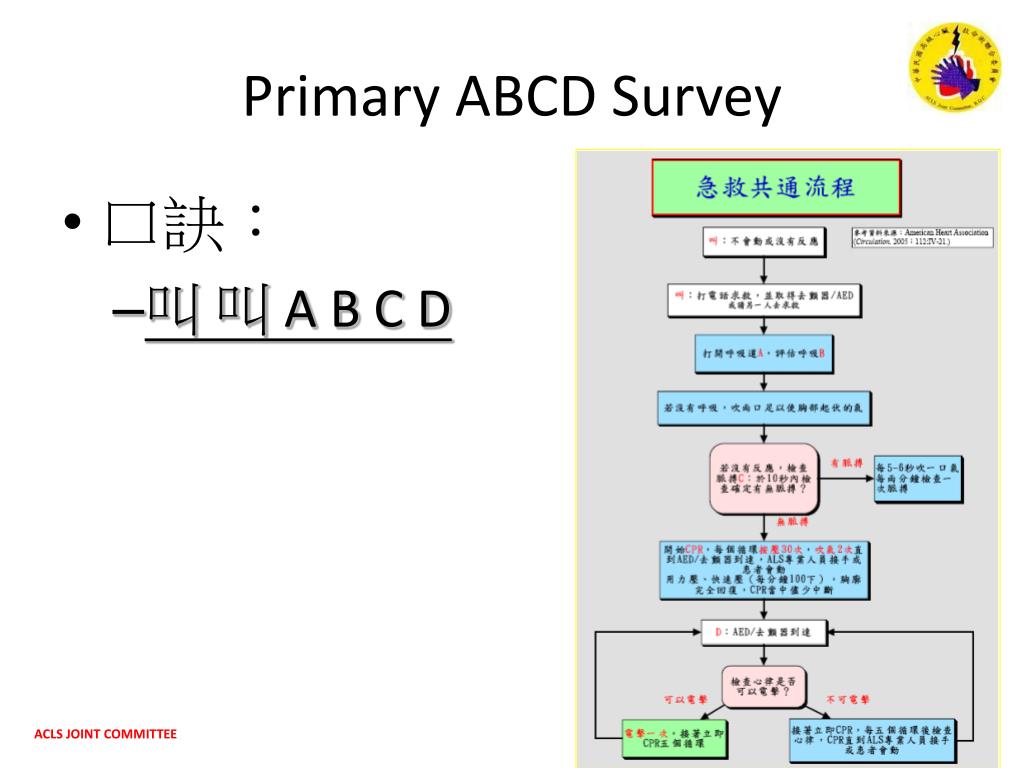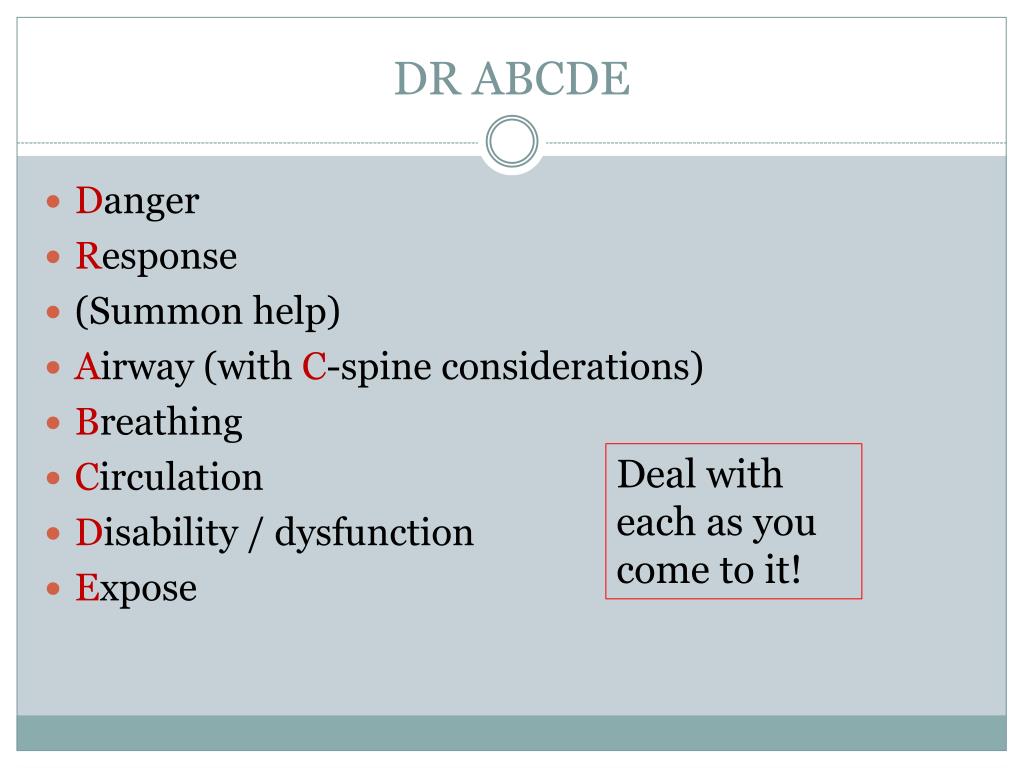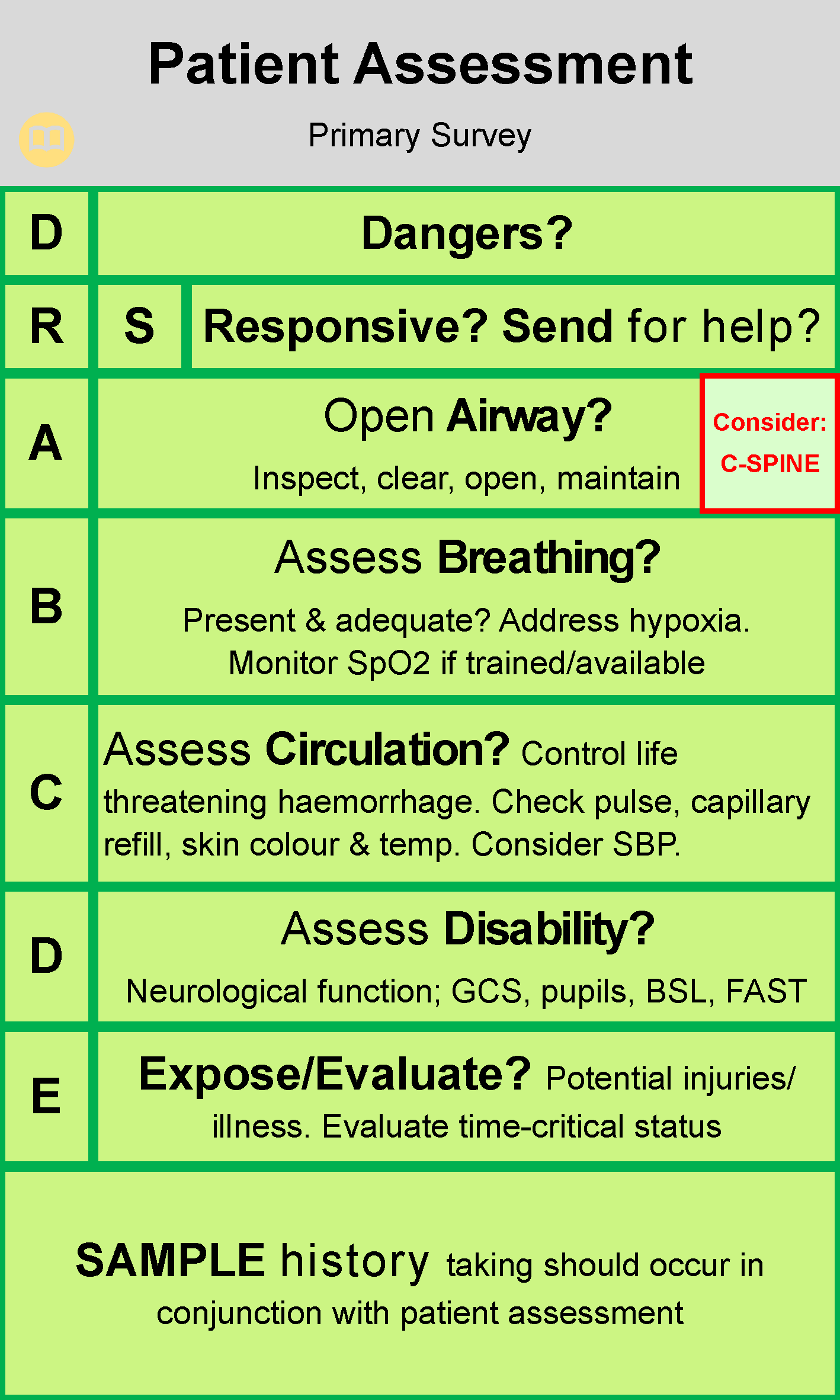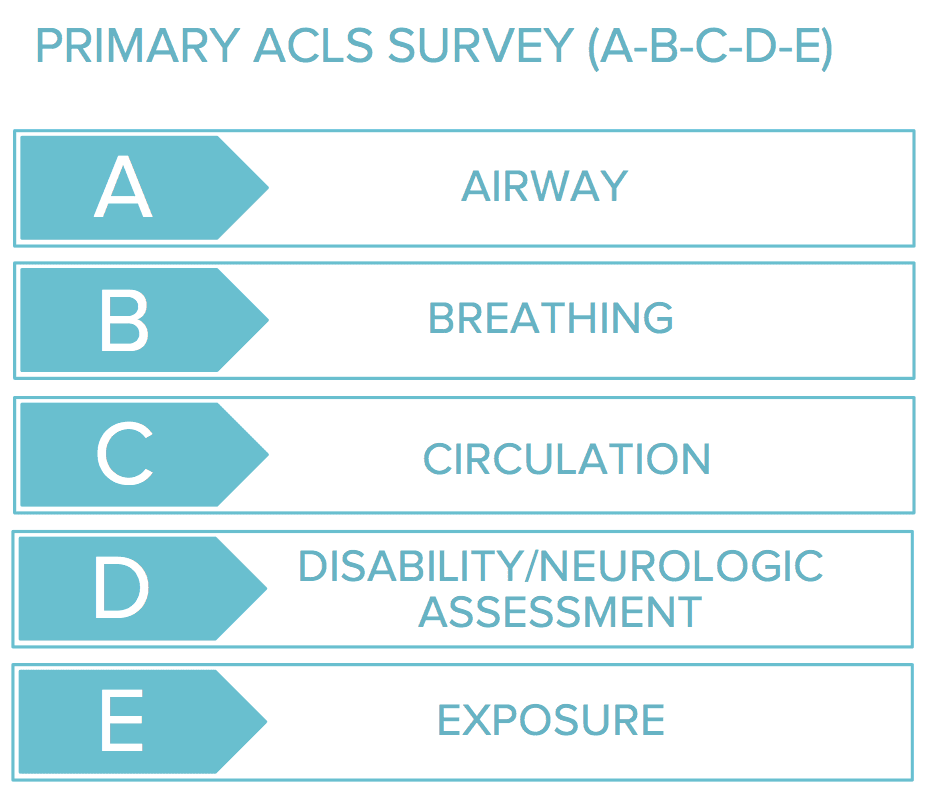
Primary Survey ABCDE
The best immediate treatment for patients with a primary cerebral condition is stabilization of the airway, breathing, and circulation. In particular, when the patient is only pain responsive or unresponsive, airway patency must be ensured, by placing the patient in the recovery position, and summoning personnel qualified to secure the airway.

PPT PENILAIAN AWAL DAN PENGELOLAAN PENDERITA TRAUMA PowerPoint Presentation ID6078621
signs: collapsed or distended neck veins, external haemorrhage (hypovolaemia, cardiac tamponade, external haemorrhage) -> IV access -> blood tests, fluid resuscitation (crystalloids -> if unresponsive blood products, compression. -> ECG, NIBP. Disability. decreased LOC, pupillary asymmetry, gross weakness. -> head or spinal cord injury. Exposure.

ABCDE approach Objectives The rational of ABCDE The
Abstract and Figures. Background: The primary survey is the initial assessment and management of a trauma patient. With a systematic method to the immediate assessment and treatment of critically.

PPT 基本救命術初次評估 The BLS Primary Survey PowerPoint Presentation ID217960
The primary survey was made to assess patients and address life-threatening injuries rapidly. While not perfect, it addresses the most common and immediate causes of death within 5 areas. These causes include: Airway obstruction. Pneumothorax. Massive hemorrhage, both internal and external. Flail chest.

Using the ABCDE approach for all critically unwell patients British Journal of Healthcare
Open the airway by placing one hand on the forehead to tilt the head back and use two fingers from the other hand to lift the chin. If they are unresponsive, you need to move on to breathing as quickly as possible. Breathing. You now need to check if the casualty is breathing normally. Place your ear above their mouth, looking down their body.

Blood On The Floor And 4 More Meaning Viewfloor.co
The primary survey is designed to assess and treat any life-threatening injuries quickly. It should be completed very rapidly. The main causes of death in a trauma patient are airway obstruction, respiratory failure, massive hemorrhage, and brain injuries. Therefore, these are the areas targeted during the primary survey. The following are some of, but not all, the specific injuries that may.

PPT Primary Survey PowerPoint Presentation, free download ID2223712
Re-assess the patient after any intervention. Assess the patient's airway. Head-tilt & chin-lift (1/2) Head-tilt & chin-lift (2/2) Jaw thrust step 1: Place two fingers under the angle of the mandible (on both sides) and anchor your thumbs on the patient's cheek. Jaw thrust step 2: Lift the mandible forwards.

ABCs of Emergency Response Understanding the Primary Survey Process YouTube
The primary survey promulgated in Advanced Trauma Life Support (ATLS) provides such an approach . The primary survey is organized according to the injuries that pose the most immediate threats to life and is performed in the order described below. In settings with limited resources, the primary survey simplifies priorities and any problems.

ACLS Primary Survey (ABCDE) ACLS Training Materials
Pastikan kepatenan jalan napas dan kebersihannya segera. Benda asing seperti darah, muntahan, permen, gigi palsu, atau tulang. Obstruksi juga dapat disebabkan oleh lidah atau edema karena trauma jaringan. Jika pasien tidak sadar, selalui curigai adanya fraktur spinal servikal dan jangan melakukan hiperekstensi leher sampai spinal dipastikan.

Primary Survey
Primary survey adalah penilaian prioritas pertolongan pertama sedangkan prioritas kedua pada secondary survey. Selain melakukan primary survey terhadap kondisi korban yang mengancam jiwa, juga harus senantiasa waspada terhadap keadaan yang dapat mengancam jiwa penolong dan selalu patuhi universal precaution. Primary survey berupa deteksi yaitu.

Difference between primary Assessment and Secondary Assessment YouTube
The secondary survey is commenced after the primary survey has been completed, immediate life threats identified and managed, and the child is stable. Continue to monitor the child's: Mental state. Airway, respiratory rate, oxygen saturation. Heart rate, blood pressure, capillary refill time.

ABCDE trauma Assessment Primary Survey in emergency setting Emergency Medicine YouTube
Removal of the patient' clothes is encouraged so that they can be fully assessed. Oxygen should be applied to achieve saturation of 94-98%. The primary survey of a trauma patient involves: A irway - with cervical spine control. B reathing. C irculation including control of exsanguinating external haemorrhage. D isability.

ACLS Primary Survey (ABCDE) ACLS Training Materials
Results. Test validation showed a Cronbach's alpha of 0.71 and an expert-novice comparison of 91.9% (standard deviation (SD) 9.1) and 72.4% (15.2) respectively (p < 0.001).Of 954 eligible participants, 240 filled out the questionnaire.

Figure 1 from The ABCDE primary assessment in the emergency department in medically ill patients
This is a universal management system that includes combined evaluation and management of injured patients. The ATLS protocol consists of a primary survey, adjunct measures, secondary survey, and tertiary survey. The Primary Survey. The objectives of the primary survey are to identify and treat immediately life-threatening conditions.

The Primary Survey The First Aid Training Company
The primary survey in trauma management is a critical initial assessment to identify and address life-threatening conditions. It follows the ABCDE approach: Airway.

Pediatric Trauma Primary Survey CABCDE C Catastrophic GrepMed
The Primary Assessment is utilized either on an unconscious patient after a BLS assessment or on a conscious patient where the BLS assessment is not typically required (in the case of cardiac or respiratory arrest). The primary ACLS survey is included in every ACLS algorithm. The Primary Survey uses the